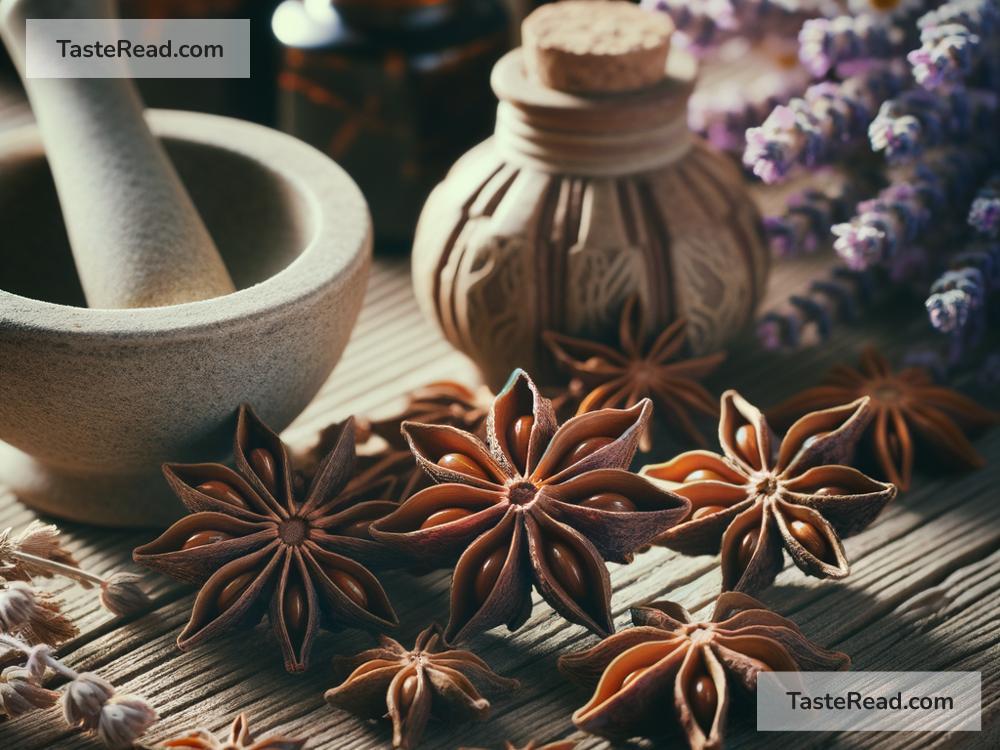The Surprising Link Between Star Anise and Traditional Medicine
If you’ve ever cooked with star anise, you know it’s a spice that brings bold, warm, and slightly sweet flavors to dishes. Its distinctive star shape and aromatic scent make it a favorite in kitchens around the world. But did you know that star anise has been used for centuries as more than just a cooking ingredient? It has a deep-rooted connection to traditional medicine, and modern science is only beginning to uncover its secrets.
In this article, we’ll explore the surprising link between star anise and healing practices across cultures. We’ll also look at its health benefits and how it’s still used today.
What Is Star Anise?
Star anise comes from the fruit of a small evergreen tree called Illicium verum, which is native to Southeast Asia. This spice is not only beautiful but also packed with flavor. It has a strong licorice-like taste and is commonly used in Asian cuisines, especially in soups, stews, and marinades.
But beyond its culinary uses, star anise has long been a valued ingredient in traditional medicine systems such as Chinese medicine, Ayurveda, and folk remedies worldwide.
Star Anise in Traditional Medicine
Traditional healers have recognized star anise’s unique properties for centuries. Let’s dive into some of its roles in ancient healing practices:
1. Digestive Aid
In Chinese medicine, star anise has been used to support digestion. Its natural compounds are believed to help relieve bloating, indigestion, and gas. Many cultures prepare herbal teas with star anise to calm the stomach and promote smoother digestion.
2. Respiratory Support
Star anise has also been traditionally used to help fight respiratory problems. Its warming properties make it useful for managing cold symptoms, coughs, and nasal congestion. For centuries, people boiled star anise in water to create cough syrups or inhaled its vapor for sinus relief.
3. Antibacterial and Antifungal Properties
Before antibiotics were invented, star anise was used in traditional medicine for its ability to fight infections. It contains compounds that can inhibit the growth of bacteria and fungi, making it helpful in treating wounds and skin infections.
4. Energy and Balance
In Ayurveda, star anise is considered to have warming energy, which is believed to balance the body’s internal systems. This warming effect is said to support circulation, boost vitality, and combat cold-related illnesses.
The Science Behind Star Anise’s Benefits
In traditional medicine, remedies are often chosen based on observation and intuition passed down through generations. What’s fascinating is that many of these cultural practices are now being backed by modern scientific research.
Shikimic Acid: The Star Ingredient
One of the most remarkable compounds in star anise is shikimic acid. This compound plays a key role in modern medicine—it’s an essential ingredient in the antiviral drug Tamiflu, which is used to treat influenza.
Scientists discovered that shikimic acid has strong antiviral properties. And while pharmaceutical companies now synthesize this compound, star anise remains one of the primary natural sources. This surprising link between traditional medicine and cutting-edge pharmaceuticals shows how ancient practices have influenced modern healthcare.
Antioxidant Properties
Star anise contains antioxidants, which help protect the body from free radicals—harmful molecules that can damage cells and lead to diseases like cancer and heart disease. Consuming antioxidant-rich foods, like star anise, can support overall health and reduce inflammation in the body.
Antimicrobial Effects
Studies have verified that star anise’s essential oils have antimicrobial properties. Lab tests have shown that its compounds can kill certain strains of bacteria and fungi, confirming the wisdom behind its historical use for infections.
How Star Anise Is Used Today
Even today, star anise is commonly used in herbal remedies and wellness practices around the world. Here are some examples of how people incorporate it into their lives:
1. Herbal Tea
Drinking star anise tea is a simple way to enjoy its health benefits. It’s especially popular for soothing digestive issues and relieving cold symptoms. To make star anise tea, simply boil a few star-shaped pods in water for about 10 minutes, then strain and enjoy!
2. Aromatherapy
The essential oil of star anise is used in aromatherapy to provide relaxation and stress relief. Its warm, grounding scent can create a calming atmosphere in your home.
3. Cooking with Purpose
Many people now cook with star anise not just for its flavor but also for its health benefits. Adding it to soups, broths, or curries is an easy way to boost your wellness while enjoying delicious meals.
Precautions to Keep in Mind
While star anise has many health benefits, it’s important to use it responsibly. There’s another variety called Japanese star anise (Illicium anisatum), which is toxic and not safe for consumption. Make sure you’re using the correct type of star anise (Illicium verum) and consult a healthcare provider if you’re considering using it as a supplement.
Conclusion
Star anise is much more than a pretty spice—it’s a powerhouse of health benefits with a rich history in traditional medicine. From aiding digestion to fighting infections and even playing a role in modern antiviral drugs, its uses are truly remarkable.
So, the next time you sprinkle star anise into your dishes or brew a cup of star anise tea, remember its fascinating connection to ancient healing traditions and its impactful role in modern science. Who knew such a small star could shine so brightly in both cooking and medicine?


